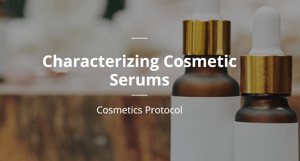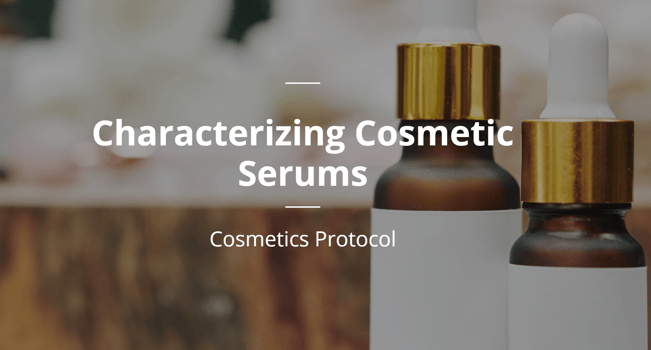Cosmetic serums are a popular self-care product to keep skin healthy. Formulation ingredients can vary dramatically. Some serums use plant-derived ingredients while others use synthetic oils depending on consumer preferences and needs. Thus, serum development is a dynamic process requiring a plethora of characterization experiments to differentiate between formulations. Here we demonstrate that the automated viscometer system, VROC® initium, can perform rate sweeps experiments to characterize different serum formulations based on their rheological properties with minimal engagement.
Formulation development can be a challenge especially when time in the research and development lab is limited. Advances in instrumentation like automation can help continue formulation characterization and development. Formulation development is vitally important to many industries including chemicals, pharmaceuticals, and cosmetics. For this application note we will focus on the cosmetics industry. Specifically, shear rate dependent viscosity is used to characterize differences in serum formulations.
The ingredients of skincare products can dramatically alter their performance which can influence the perception of the product. One type of product that is widely popular are facial serums. Serums are used to promote rejuvenation and anti-aging of skin. The characteristics of serum formulations are driven by customer and manufacturing needs. Customers want products that feel “luxurious” (high viscosity) but also penetrate and moisturize their skin (low viscosity). While manufacturers are focused on ensuring quality control, such as consistency between different formulation lots.
The viscosity of these formulations is directly dependent on their ingredients. For serums the primary active ingredients are polymers and oils, which have dramatically different viscous behavior (Moravkova and Filip, 2014). High molecular weight polymers in solution will exhibit a viscosity that decreases in a high shear environment. Additionally, exceptionally large polymers will increase the viscosity of the formulation at low shear rates but will decrease in viscosity at high shear rates (Bird et al 1987). Conversely, because of their low molecular weight, oils will maintain their viscosity even at high shear rates (Bird et al 1987). Knowing how these additives affect the rheology of serum formulations can guide their development based on the preferences of customers and developers.
Want to learn more about the application of viscosity in cosmetics? Learn more in our thixotropic samples application note where we explain how to measure thixotropis samples with the RheoSense microVISC™ viscometer.



